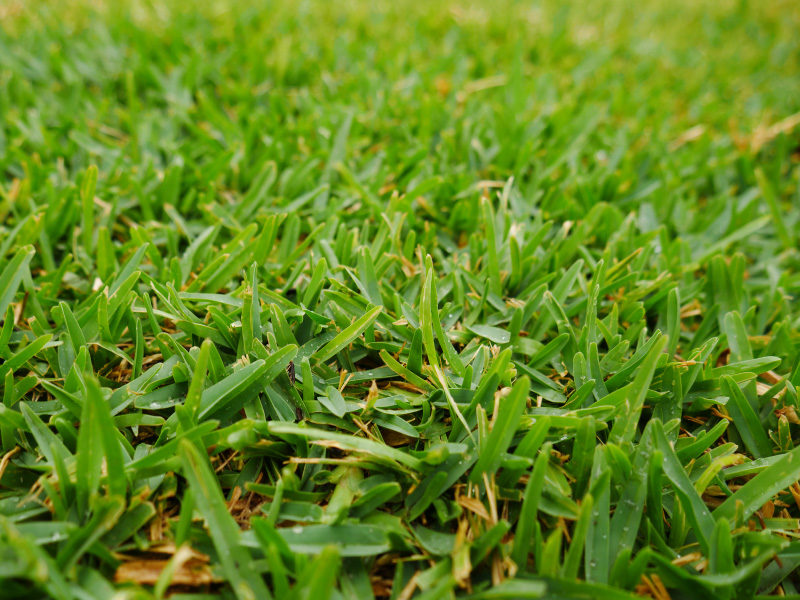Our four-legged furry friends are an integral part of our lives, and we wouldn’t want to be without them. But if you also have a lawn that you cherish, you’ll know that sometimes pets and lawns don’t mix very well. Our pets love using the lawn – although in different ways than we do. For many pets, it’s where they spend most of their time, so it’s important the lawn is a happy place for them. But if you’ve had the frustration of dealing with urine burn, digging and the wear and tear caused by energetic pets, you may be wondering if it’s possible to have an attractive lawn if you own pets.
The good news is that it IS possible. You need a well-kept lawn that is safe both for pets and from pets, so that it serves both you and your pets well. There are plenty of tactics you can use to prevent your pets from wreaking havoc on your lawn, while still allowing them to enjoy using it. Read on to find out how to have a happy pet and a happy lawn.
Here’s how to keep your lawn safe for your pets
Use real grass
While synthetic grass might seem ideal for pets, they’re actually far better off with the real thing. In summer, synthetic grass can heat up alarmingly, making it unusable for pets throughout most of the day. In fact, it can be up to three times hotter than real grass.
As well, you’ll have to clean up after your pet if they use the lawn as a toilet, as artificial grass cannot absorb liquids, solids and smells like real grass can. If you don’t want your lawn to smell like a toilet, you’ll need to clean it regularly – which can add up to a lot more work.
Choose a pet-friendly lawn variety
Pets can be tough on your lawn, using it as a playground, a racetrack, a toilet and a hiding place for bones. That’s a lot for your grass to handle! A sensitive lawn variety will struggle to handle excessive pet activity. Certain varieties of lawn can withstand all this activity better than others, so it’s imperative to choose one of these to prevent your pet destroying your lawn. An ideal choice for pet owners is Sir Walter Buffalo DNA Certified turf. This tough, self-repairing variety will minimise the damage caused by pets and will quickly cover over holes or torn up areas with its dense growth habit. It grows quickly and has rapid re-growth, meaning you won’t notice the effects of your pet’s destructive ways on your turf for long. As well, it’s a low allergenic variety that won’t cause rashes or allergies in sensitive pets. Its leaves are soft to the touch and irritation free, making it ideal for the rough and tumble of pets.
You can buy Sir Walter turf here.
Other good choices include Tif Tuf Bermuda turf, Eureka Kikuyu and Nullarbor Couch. All of these varieties can self-repair very well, withstand damaging pet activity and are ideal for high traffic areas. And they can do all this while still looking great.
Buy Tif Tuf Bermuda here.
Buy Eureka Kikuyu here.
Buy Nullarbor Couch here.
Use chemicals and fertilisers safely
Always be mindful of potentially harmful chemicals in lawn fertilisers or weed treatments. Read the product packs carefully and keep your pets inside and off the lawn for the recommended amount of time when using chemical products. Only choose products that are suitable for lawns with pets, to prevent any tragic accidents from occurring. Ingesting pesticides or fertilisers can cause sickness and health problems in pets. Check with your local lawn supplier or garden store to be sure. Wherever possible, use organic and natural fertilisers, such as manure of non-chemical pesticides, to minimise the chances of your pet being harmed.
A tough variety like Sir Walter Buffalo is a great choice as it has a natural resistance to pests and diseases, thus requiring less fertiliser and pesticide than other types of lawn.
Tidy up
It’s a simple tip, but make sure you clean up after yourself when you’ve been working on the lawn. Putting away sharp tools and potentially harmful chemicals as soon as you’ve finished with them will ensure your pet always stays safe. And make sure your pets are kept somewhere safe when you’re mowing or trimming the lawn.
Provide a shady resting spot
If your lawn is very sunny, it can be hard for your pet to escape the heat on hot days. Make sure you provide a shady spot for them somewhere on the lawn so they can hide when it gets hot. Shady bushes or trees overhanging the lawn are ideal. Make sure your pet always has access to a water bowl too.
Here’s how to keep your lawn safe from your pets
Don’t let your pets become bored
Bored pets, particularly dogs, can create havoc on your lawn. Pets with excess energy can cause a lot of wear and tear in high traffic areas of your lawn. Choosing a lawn that can easily self-repair, such as those listed above, will help. If it’s not possible to replace your existing lawn, there are a few ways you can help prevent boredom in your pets.
- Make sure your pet is getting enough attention and exercise.
- Provide them with toys to keep them amused when they’ll be left alone. Rotate the toys so that they don’t get sick of them and regularly have something new to play with.
- Work on their training, to prevent destructive behaviour such as digging and scratching in the lawn.
- Encourage digging in an appropriate place – one where you don’t mind your dog digging. Bury a few treats there to encourage your pet to dig in this particular place and not the entire lawn.
- If your pets’ excessive activity is causing bare spots, try putting an obstacle – such as a pot plant – in areas of high use. This will force your pet to continually use different paths and give the lawn a break from excessive activity and the chance to repair itself.
Prevent or minimise digging
Frequent digging is a sign of boredom, so make sure your pet has enough to keep them amused when you’re not around (use the strategies listed above). If your pet keeps digging in inappropriate places, try placing something there to discourage them. Vinegar, citrus or chilli will often deter dogs, while citrus or mint will deter cats.
You may need to fill in the holes and re-seed the areas of frequent digging, or lay more slabs of instant turf.
Deal with wear and tear
Pets may cause a lot of damage and wear to your lawn, or in the worst-case scenario, kill off parts of it completely. If this is occurring, you may need to fertilise and aerate these areas more regularly to reduce compaction and wear.
For more on how to grow grass to last, read this article.
Treat urine burn
When dogs urinate on the lawn it can cause urine burn, as they are essentially dousing the grass with highly concentrated nitrogen. This unsightly condition scorches the grass and leads to dead and brown patches. This can become a real problem, especially if your dog goes in the same spot repeatedly.
You can try training your dog to urinate in certain places to minimise this problem – although dogs won’t necessarily respond to this type of training. If this doesn’t work, try adding dog rocks to your dog’s water. Dog rocks are naturally occurring igneous rocks that remove tin and nitrates which naturally occur in water. In most cases, this will cause the burnt patches to disappear.
Another strategy is to dilute the urine as soon as you notice it. Keep a bucket of water or a watering can in a handy place and use it whenever necessary. If you can’t hang around all day waiting for your dog to pee (which is most of us), just keep watering the lawn on a regular basis to help dilute any urine. And avoid letting your dog out on the lawn to go to the toilet first thing in the morning, as dog urine tends to be strongest at that time.
An evergreen variety of turf such as Sir Walter Buffalo won’t suffer too much from colour loss and will recover much quicker from urine burn too. You can also try using natural turf grass colourants such as ColourGuard to cover the urine stains if you need your lawn to look better quickly.
ColourGuard is available here.
Pet-friendly lawn care
So, don’t let your pets stop you from having a great lawn, and don’t let a great lawn stop you from having pets! It’s possible to have both – without tearing your hair out. Follow these tips to have a happy and healthy pet as well as a happy and healthy lawn.

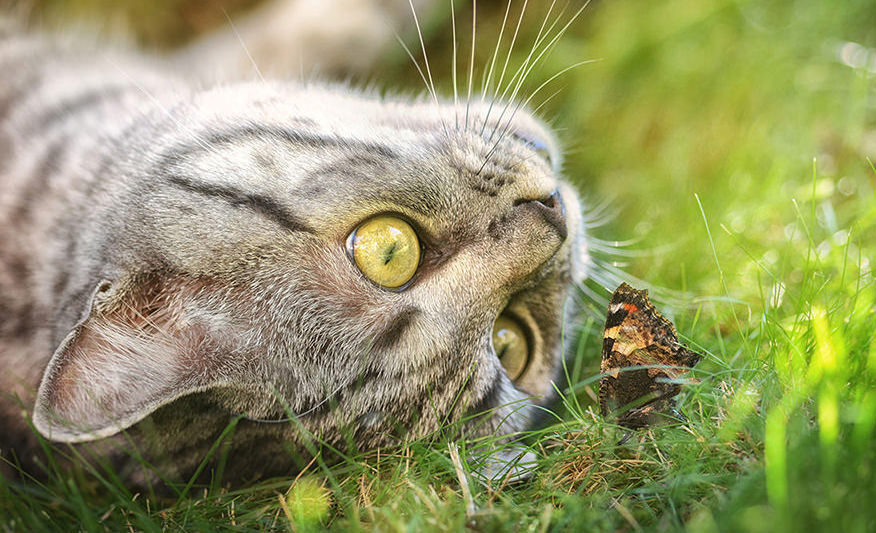
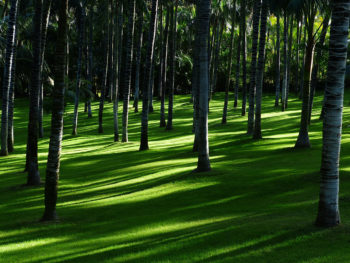
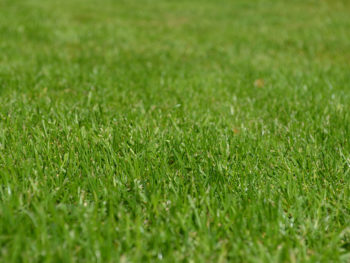
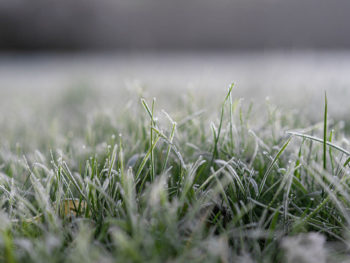
 Use these strategies to get a thicker lawn
Use these strategies to get a thicker lawn
